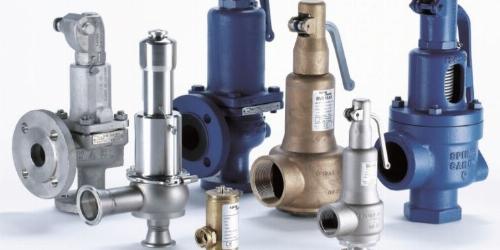Working safely around high-voltage conductors is a challenge for many workers. High-voltage systems are generally associated with utility services and heavy industry, such as pulp mills, sawmills, and mining operations. With care and precise planning, you can operate equipment and tools safely around these potentially lethal power lines.
Safety requires a particular frame of mind, a personal commitment, an awareness, and full safety compliance, based upon knowledge, training, and experience. The safety of employees and field personnel, and even the safety of the public, depend upon your conscientious and disciplined use of safe work practices in all of your day-to-day operations.
This course provides an overview of high-voltage power-system operations and will allow you to engage with the material by participating in training exercises requiring the application of system operating knowledge.
- Provide a practical understanding of electrical power system safety
- Declare the regulatory and legal safety requirements
- Demonstrate the earthing systems Safety and Risk Assessment
- Explain the relation between maintenance activities for various equipment and safety
- Select and maintain the electrical equipment in hazardous areas and its standard
- Indicate arc flash hazard and mitigation
- Introduce main recommendations for electrical safety
- Apply general work and plant safety rules






- What is hazard analysis
- Shock
- Arc definition, description and characteristics
- Arc burns
- Blast
- Affected body parts (skin, the nervous system, muscular system heart , the pulmonary system )
- Causes injury and death
- Shock effect
- Arc flash effect
- Protective strategies
- Equipment earthing
- Measuring earthing rods
- System earthing
- Unearthed systems
- Solid earthing
- Resistance earthing
- Reactance earthing
- Classification of supply / installation system earthing
- Earthing via neutral earthing compensator
- Distribution transformers
- Zig zag transformers
- Comparison of methods (advantages/disadvantages)
- Evaluation of earthing methods
- Touch and step voltage
- Effect of electric shock on human beings
- Electric shock and sensitive earth leakage protection
- Sensitive earth leakage protection
- Risk assessment principals
- How to assess the risks in your workplace?
- How to conduct risk assessment?
- Risk assessment job briefing and planning checklist
- Short history of arc flash research
- NPFA-70E-2004 application
- Calculating the Required Level of Arc Protection (Flash Hazard Calculations)
- The Lee Method
- Methods Outlined in NFPA 70E
- IEEE Standard Std 1584-2002
- Required PPE for Crossing the Flash Hazard Boundary
- A simplified approach to the selection of protective clothing
- Arc flash hazard assessment
- Traditional methods for reducing arc flash
- New strategies for reducing arc flash hazards and suggestions for limiting arc-flash and shock hazards
- Standardizing arc flash hazard labels
- The role of over-current protective
- Devices in electrical safety
- Staged arc-flash tests
- General inspection and testing requirements for electrical safety equipment
- Flash and thermal protection (clothing and materials)
- Head, eye, and hand protection
- Rubber-insulating equipment
- Hot sticks (description, application , testing)
- Insulated tools
- Barriers and signs
- Safety tags, locks, and locking devices
- Voltage-measuring instruments
- Proximity testers
- Contact testers
- Selecting voltage-measuring instruments
- Instrument condition
- Low voltage voltmeter safety standards
- Three-step voltage measurement process
- General considerations for low-voltage measuring instruments
- The need for safety grounding
- Safety grounding switches
- Safety grounding jumpers
- Selecting safety grounding jumpers
- Installation and location
- Operating principles
- Applications
- Safety electrical one-line diagram
- The electrician’s safety kit
- The six-step safety method
- Pre-job briefings
- Energized or de-energized?
- Safe switching of power systems
- Remote operation
- Operating medium-voltage switchgear
- Operating low-voltage switchgear
- Operating molded-case breakers and panel boards
- Operating enclosed switches and disconnects
- Operating open-air disconnects
- Operating motor starters
- General energy control programs
- Specific energy control programs
- Basic energy control rules
- Definition and description
- When to use locks and tags
- Locks without tags or tags without locks
- Rules for using locks and tags
- Responsibilities of employees
- Sequence
- Lock and tag application
- Isolation verification
- Removal of locks and tags
- Safety ground application
- Control transfer
- Nonemployees and contractors
- Lockout-tagout training
- Procedural reviews
- Purpose of the measurement, what and how to measure
- Three-step measurement process
- Instrument selection and condition
- Safety grounding principles
- Safety grounding location
- Application of safety grounds
- The equi-potential zone
- Removal of safety grounds
- Control of safety grounds
- Approach distance definitions
- Determining shock hazard approach distances
- Calculating the flash hazard minimum approach distance (flash protection boundary)
- Illumination
- Conductive clothing and materials
- Confined work spaces
- Authorized users
- Visual inspections
- Electrical tests
- Wet and hazardous environments
- Field marking of potential hazards
- The one-minute safety audit
- General maintenance requirements
- The safety-related case for electrical maintenance
- Relationship of improperly maintained electrical equipment to the hazards of electricity
- Hazards associated with electrical maintenance
- The economic case for electrical maintenance
- Reliability Centered Maintenance (RCM)
- Impact of RCM on a facilities life cycle
- The eight step maintenance program
- Frequency of maintenance
- Substations, switchgear assemblies
- Switchboards, panel-boards, motor control
- Centers, and disconnect switches
- Premises wiring
- Controller equipment
- Fuses and circuit breakers
- Rotating equipment
- Hazardous (classified) locations
- Batteries and battery rooms
- Portable electric tools and equipment
- Personal safety and protective equipment
- Substations and switchgear rooms
- The basic rules for substations and switchgear rooms
- Requirements for identification
- Access to high voltage enclosures and equipment
- Responsibilities for power systems
- Responsibilities for operations in power systems
- Electrical safety documents
- Switching of power systems under normal circumstances
- Switching under emergency conditions
- Circumstances requiring isolation and/or earthing
- Isolation
- Other earthing methods on high voltage electrical equipment
- Earthing of low voltage electrical equipment of an earthed system
- Recording of HV and LV Earth
- Work on electrical equipment
- Work on high voltage electrical equipment
- Work on high voltage transformers
- Work on high voltage switchgear
- Work on low voltage electrical equipment
- Work on cables
- Work on low voltage power cables
- Work on high voltage power cables
- Spiking of cables for identification
- Work on pilot cables adjacent to live circuits
- Work on overhead lines
- Identification of circuits
- Climbing of towers or structures
- Use of safety belts
- Approach of lightening
- Work on electrical equipment operated by or containing compressed air
- Work on electrical protection relays
- Work on remotely or automatically controlled electrical equipment
- Physical danger
- Precautions
- Work on enclosures protected by fixed fire fighting equipment
- Automatic control
- Ventilation after a discharge
- Testing
- Use of safety locks, key safes and other safety
- Switching, working or testing in potentially flammable atmospheres hazardous areas
- Additional precautions
- Non electrical work in the vicinity of live parts
- Caution notices
- The use of portable; (hand-held) electrical apparatus
- Definitions and general requirements
- Safety-related work practices
- Establishing an electrically safe work condition
- Work involving electrical hazards
- Selection and use of work practices
- Use of equipment
- Safeguards for personnel protection
- The Regulatory Bodies
- The American National Standards Institute
- The Institute of Electrical and Electronic Engineers
- National Fire Protection Association
- American Society for Testing and Materials
- American Society of Safety Engineers
- The Occupational Safety and Health Administration
- Other Electrical Safety Organizations
- General Description
- Industries and Facilities Covered
- Technical/Safety Items Covered
- General Description
- Industries and Facilities Covered
- Safety Requirements for Special Equipment
- General description
- Industries and facilities covered
- Technical and safety items covered
- General description
- Industries and facilities covered
- Technical safety items covered
- General industry
- Construction industry
- Specific safety-related work practices
- Electrolytic cells
- Batteries and battery rooms
- Use of lasers
- Power electronic equipment
- Safety-related work requirements: research and development laboratories
- Limits of approach
- Incident energy and flash protection boundary calculation methods
- Electrical safety program
- Hazard/risk evaluation procedure
- Sample lockout/tag-out procedure
- Simplified, two-category, flame-resistant (fr) clothing system
- Job briefing and planning checklist
- Energized electrical work permit
- General categories of electrical hazards
- Typical application of safeguards in the cell line working zone
- Layering of protective clothing and total system arc rating
- Example industrial procedures and policies for working near overhead
- Electrical lines and equipment
- Safety-related design requirements
- Electrical equipment in hazardous areas












Training can take place in 4 formats:
- Self-paced
- Blended learning
- Instructor-led online (webinar)
- Instructor-led offline (classroom)
Description of training formats:
- Self-paced learning or e-Learning means you can learn in your own time and control the amount of material to consume. There is no need to complete the assignments and take the courses at the same time as other learners.
- Blended learning or "hybrid learning" means you can combine Self-paced learning or e-Learning with traditional instructor-led classroom or webinar activities. This approach requires physical presence of both teacher and student in physical or virtual (webinars) classrooms or workshops. Webinar is a seminar or presentation that takes place on the internet, allowing participants in different locations to see and hear the presenter, ask questions, and sometimes answer polls.
- Instructor-led training, or ILT, means that the learning can be delivered in a lecture or classroom format, as an interactive workshop, as a demonstration under the supervision and control of qualified trainer or instructor with the opportunity for learners to practice, or even virtually, using video-conferencing tools.
When forming groups of students, special attention is paid to important criteria - the same level of knowledge and interests among all students of the course, in order to maintain stable group dynamics during training.
Group dynamics is the development of a group in time, which is caused by the interaction of participants with each other and external influence on the group. In other words, these are the stages that the training group goes through in the process of communicating with the coach and among themselves.
The optimal group size for different types of training:
- Self-paced / E-learning: 1
- Instructor-led off-line (classroom): 6 – 12
- Instructor-led on-line (webinar): 6 – 12
- Blended learning: 6 – 12
- Workshop: 6 – 12
- On-the-job: 2 – 4
- Simulator: 1 – 2
Feedback in the form of assessments and recommendations is given to students during the course of training with the participation of an instructor and is saved in the course card and student profile.
In order to control the quality of the services provided, students can evaluate the quality and training programme. Forms of assessment of the quality of training differ for courses with the participation of an instructor and those that are held in a self-paced format.
For courses with an instructor, start and end dates are indicated. At the same time, it is important to pay attention to the deadlines for passing tests, exams and practical tasks. If the specified deadlines are missed, the student may not be allowed to complete the entire course programme.
A personal account is a space for storing your training preferences, test and exam results, grades on completed training, as well as your individual plan for professional and personal development.
Users of the personal account have access to articles and blogs in specialized areas, as well as the ability to rate the completed training and leave comments under the articles and blogs of our instructors and technical authors
Registered users of a personal account can have various roles, including the role of a student, instructor or content developer. However, for all roles, except for the student role, you will need to go through an additional verification procedure to confirm your qualifications.
Based on the results of training, students are issued a certificate of training. All training certificates fall into three main categories:
- Certificate of Attendance - students who successfully completed the course but did not pass the tests and exams can apply for a certificate of attendance.
- Certificate of Completion - students who have successfully completed a course could apply for a Certificate of Completion, this type of certificate is often required for compliance training.
- Verified Certificate - it is a verified certificate that is issued when students have passed exams under the supervision of a dedicated proctor.
You can always download a copy of your training certificate in PDF format in your personal account.
You will still have access to the course after completing it, provided that your account is active and not compromised and Tecedu is still licensed for the course. So if you want to review specific content in the course after completing it, or do it all over again, you can easily do so. In rare cases, instructors may remove their courses from the Tecedu marketplace, or we may need to remove a course from the platform for legal reasons.
During the training, you may encounter various forms of testing and knowledge testing. The most common assessment methods are:
- preliminary (base-line assessment) - to determine the current level of knowledge and adapt the personal curriculum
- intermediate - to check the progress of learning
- final - to complete training and final assessment of knowledge and skills, can be in the form of a project, testing or practical exam
Travel to the place of full-time training is not included in the cost of training. Accommodation during full-time studies can be included in the full board tuition fees.
While Tecedu is not an accredited institution, we offer skills-based courses taught by real experts in their field, and every approved, paid course features a certificate of completion or attendance to document your accomplishment.
You can preview samples of the training materials and review key information about the course on our website. You can also review feedback and recommendations from students who already completed this course.
We want you to be happy, so almost all purchased courses can be returned within 30 days. If you are not satisfied with the course, you can request a refund, provided the request complies with our return policy.
The 30-day money back policy allows students to receive quality teaching services with minimal risk, we must also protect our teachers from fraud and provide them with a reasonable payment schedule. Payments are sent to instructors after 30 days, so we will not process refund requests received after the refund period.
We reserve the right, in our sole discretion, to limit or deny refund requests in cases where we believe there is refund abuse, including but not limited to the following:
- A significant portion of the course has been consumed or downloaded by a student before the refund was requested.
- Multiple refunds have been requested by a student for the same course.
- Excessive refunds have been requested by a student.
- Users whose account is blocked or access to courses is disabled due to violation of our Terms and Conditions or the Rules of Trust and Security.
- We do not grant refunds for any subscription services.
- These refund restrictions will be enforced to the extent permitted by applicable law.
We accept most international credit and debit cards like Visa, MasterCard, American Express, JCB and Discover. Bank Transfers also may be an option.
Conducting classes is based on the fact that the teacher demonstrates text, drawings, graphics, presentations on an interactive board, while the content appears in the student's electronic notebook. A specially designed digital notepad and pen are used to create and edit text and images that can be redirected to any surface via a projector.
Classes are live streamed online, automatically recorded and published on the Learning Portal, allowing you to save them for reuse anytime, anywhere, on any mobile device. This makes it possible not to miss classes and keep up with classes and keep up with the passage of new material.
Real-life training uses the principles of game organization, which allows future professionals to rehearse and hone their skills in a virtual emergency. Learning as a game provides an opportunity to establish a connection between the learning activity and real life.
The technology provides the following learning opportunities:
- Focused on the needs of the user
- Instant feedback
- Independent decision making and choice of actions
- Better assimilation and memorization of the material
- Adaptive pace of learning tailored to the individual needs of the student
- Better transfer of skills learned in a learning situation to real conditions
Basic principles of training:
- A gradual increase in the level of difficulty in the game;
- Using a simplified version of a problem situation;
- Action in a variable gaming environment;
- The right choice is made through experimentation.
The main advantages of Game Based Learning technology:
- Low degree of physical risk and liability
- Motivation to learn while receiving positive emotions from the process;
- Practice - mirroring the real situation
- Timely feedback
- Choice of different playing roles
- Learning in collaboration
- Developing your own behavior strategy
Conducting practical classes online using remote access technologies for presentations, multimedia solutions and virtual reality:
- Laboratory workshops that simulate the operation of expensive bench equipment in real production
- Virtual experiment, which is visually indistinguishable from a remote real experiment performed
- Virtual instruments, which are an exact copy of real instruments
- Mathematical modeling to clarify the physical characteristics, chemical content of the investigated object or phenomenon.


















